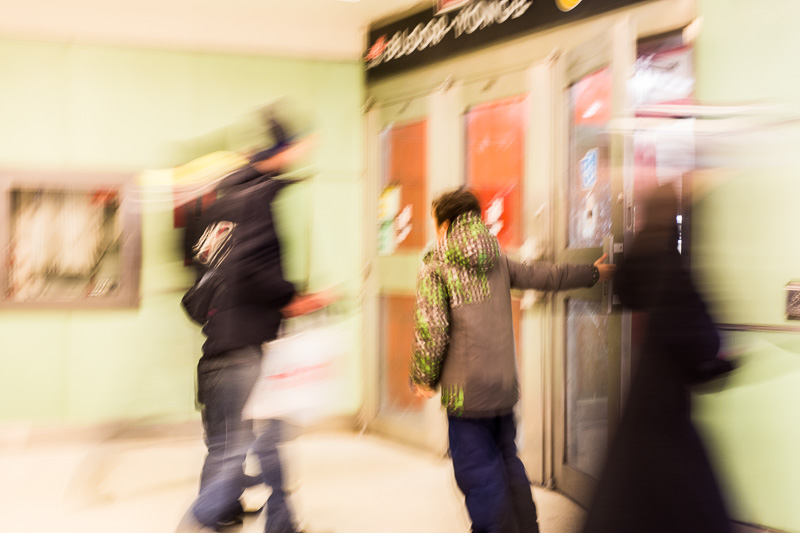I shoot with a DLSR from Canon’s 5D series and so I was delighted to learn that the new 5DS & R cameras would come with a 50 megapixel sensor. Naturally, I began to salivate: at that resolution, imagine the size of the images I could print! Once the exclusive province of medium and large-format Hasselblads costing tens (or even hundreds) of thousands of dollars, the hi-res image has fallen within reach of the consumer pro market. Although affordable, one must use the term advisedly since the 5DS & R bodies retail for more than C$4,000. I was determined to have one, but wasn’t sure how enthusiastic my wife would be about me spending that much money on something she regards as a toy for someone old enough to know better. We cut a deal: I can buy a 5DS but only after I’ve lost 20 lbs. What’s more, I will have to weigh in each morning and if I’m above my target weight, I don’t get to use the camera. My wife will have a healthy new husband who is more likely to provide her with companionship in her old age; I will have a new camera so I can deprive her of companionship in the here and now.
Halfway to my goal, the inevitable happens: rumours suggest that Sony will release a new camera with a 57 megapixel sensor. I’m despondent. I may as well eat a hamburger and drown my sorrows in a pitcher of beer. Who cares what I have slung around my neck as I waddle my fat ass through the streets.

There will always be hardware that’s just beyond my latest purchase. The same is true of computer monitors, smart phones, tablets, processors, internet connections. Why do we subject ourselves to this cycle of desire and disappointment?
My kneejerk reaction is to suggest that this state of affairs arises from a conspiracy, or at least a synergistic manipulation, of technology manufacturers and global telcos. But in her book, On Photography, Susan Sontag hints at a more benign explanation—benign because it relies on a cultural narrative that predates (and in some respects lies beyond the reach of) technology manufacturers and global telcos. Addressing surrealism in photography, she writes:
The contingency of photographs confirms that everything is perishable; the arbitrariness of photographic evidence indicates that reality is fundamentally unclassifiable. Reality is summed up in an array of casual fragments—an endlessly alluring, poignantly reductive way of dealing with the world. Illustrating that partly jubilant, partly condescending relation to reality that is the rallying point of Surrealism, the photographer’s insistence that everything is real also implies that the real is not enough. By proclaiming a fundamental discontent with reality, Surrealism bespeaks a posture of alienation which has now become a general attitude in those parts of the world which are politically powerful, industrialized, and camera-wielding. Why else would reality ever be thought of as insufficient, flat, overordered, shallowly rational? In the past, a discontent with reality expressed itself as a longing for another world. In modern society, a discontent with reality expresses itself forcefully and most hauntingly by the longing to reproduce this one. As if only by looking at reality in the form of an object—through the fix of the photograph—is it really real, that is, surreal.
The production of ever-higher resolution cameras may be understood as a commercial answer to late modernism’s disaffection with the limitations of reality and its desire for the “really real”. It is not for nothing that Sontag titles her first chapter “In Plato’s Cave”.
In another sphere of digital life, Google has undertaken an analogous project. Google’s Streetview seeks to produce a regularly updated visual record of every publicly accessible street and path in the world. Its commercial justification is user convenience e.g. determining beforehand if there is parking available in front of a given building. But the project is grounded in a long-standing and well-publicized epistemology, what Jaron Lanier describes in We Are Not A Gadget as cybernetic totalism. Google believes that it is possible to know everything and to produce a searchable record of everything known. (It appears the NSA shares this belief.) However, the belief in a cybernetic totalism engages us with a paradox.
Imagine a future Google so technologically advanced that it can produce a “streetview” that documents every last bit of reality. The result is both granular and comprehensive, reproducing every subatomic particle in the universe. But where does one store a reproduction of the universe? And if a reproduction of the universe is stored in the universe, must it not also include a reproduction of itself to achieve its completeness? And must it not also include a reproduction of the reproduction? And so on.

I don’t know enough about philosophy to say for certain, but I wonder if cybernetic totalism bears some relation to Bertrand Russell’s set paradox. The universe is like the set of all sets. The set of all sets includes a set whose function is to reproduce sets (like a giant streetview camera?). But a set-reproducing set can’t exist within the set it reproduces. Therefore the set of all sets cannot be the set of all sets.
I don’t engage this paradox for the simple pleasure of mind-fucking photographers, but rather to draw attention to the absence of a stable rationale for the pursuit of ever-increasing camera resolutions and the obsessive documentation it enables. Recently, twitter was awarble with news of a 365 gigapixel panorama of Mont Blanc and environs. It took two months for the team to stitch together the 70,000 images that comprise the panorama. If printed at 300 dpi, it would cover a football pitch. I receive this enthusiastically as data collection; I have more difficultly receiving it as photography. It illustrates the obsessional quality of a quest for the really real through photograph-as-reproduction. If they had the gear for it, I have no doubt our Mont Blanc photographers would photograph the universe and spread the resulting panorama on a giant celestial football pitch.

Often, what jars us from our complacency and challenges us to refresh our craft is precisely what cuts across the grain of contemporary trends. In photography, those trends include fetishizing the really real. Hi-res DSLRs, instantaneous auto-focus, HDR in post-processing. All these tricks alleviate our anxieties about occupying indeterminate space.
Use film. Recharge the batteries in an old point-and-shoot. Switch everything to manual mode. Fuck image-processing software. We aren’t in this game to make enhanced copies of the real world. Leave mimesis back in ancient Greece where it belongs. Surely, after more than two millennia, we can come up with fresh ways to think about light and colour.